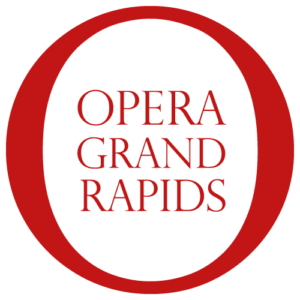Program
Saturday, September 10, 2022 at 7:30 p.m.
Jack H. Miller Center for Musical Arts, Hope College
Le Tombeau de Couperin
Maurice Ravel (1875-1937)
1. Prélude
2. Forlane
3. Menuet
4. Rigaudon
Premiére Rhapsodie for Clarinet and Orchestra
Claude Debussy (1862-1918)
Gary June, clarinet
Intermission
Pavane, op. 50
Gabriel Fauré (1845-1924)
Adagio for Strings
Guillaume Lekeu (1870-1894)
Le Boeuf sur le Toit (“The Bull on the Roof”), op. 58
Darius Milhaud (1892-1974)
Tickets: Adults - $25, Students through college - $5
Onstage seating upcharge: $50
Make onstage reservations through the HSO office.
This first concert of the season, formerly known as “Classics Up Close,” will move to the Jack H. Miller Center for Musical Arts. A limited number of “Up Close” on-stage seats will be available on a first come, first served basis. Call the HSO office at 616-796-6780 to reserve stage seating. This program will feature favorite French classics such as Ravel’s “Le Tombeau de Couperin,” Faure’s “Pavane,” and Milhaud’s “The Bull on the Roof.” Clarinetist Gary June will be the featured artist on Debussy’s First Rhapsody for clarinet and orchestra.
Tickets: Adults - $25, Students through college - $5
Onstage seating upcharge: $50
Make onstage reservations through the HSO office.
As of September 1, masks will not be required for concerts. This may be subject to change based on the evolution of the pandemic or venue requirements.
Learn more about the music…
We will be hosting not only the Classical Chat series at Freedom Village, but also Pre-Concert Talks! Details below:
Classical Chats at Freedom Village: These informative and fun talks are led by Johannes Müller-Stosch and take place at 3:00pm on the Thursday before each Classics concert. (Freedom Village, 6th Floor Auditorium, 145 Columbia Ave.)
Pre-Concert Talks: These talks, led by Johannes Müller-Stosch and Amanda Dykhouse, will be online this year under the "Pre-Concert Talk" Tab. There are opportunities for you to ask questions about upcoming programs on that tab. We look forward to resuming live Pre-Concert Talks when the pandemic lessens.
New to the Symphony? Check out the Frequently Asked Question page…
Parking Map at the Miller Center
Holland Symphony Orchestra will reserve and monitor Lot 40 for handicapped parking. The faculty parking lots are available for parking after 5pm

Le Tombeau de Couperin
Maurice Ravel
Born: March 7, 1875, Ciboure, near Saint-Jean-de-Luz, Basses-Pyrénées
Died: December 28, 1937, Paris
Written: piano suite started July 1914; completed June 1917
Orchestrated: 1919
Premiered: February 28, 1920, Pasdeloup Orchestra of Paris
Approximate duration: 17 minutes
Instrumentation: 2 flutes, 2 oboes and English horn, 2 clarinets, 2 bassoons, 2 horns, trumpet, harp, and strings
The French word “tombeau” literally means “tomb,” but it is also used to describe a piece of music written as a memoir. Maurice Ravel began his “Tombeau,” a piano suite, in 1914. He wrote the work as an homage to the French composer and keyboardist François Couperin. Ravel wasn’t just paying his respects to Couperin. He wanted to honor the genre that Couperin perfected and popularized–the French baroque keyboard suite containing a variety of dances.
World War I interrupted his composition. Ravel tried to enlist in the military, but he was very small and often sick, so he was deemed unfit for military service. He instead served as a nurse’s aid and ambulance and truck driver for the 13th Artillery Regiment. Those experiences took a physical toll on Ravel, but gave him a lot of time to think about compositions, including this suite. His mother died in 1917, causing Ravel’s mental and physical health to decline significantly, and he was discharged. After he recovered he returned to this keyboard suite, but expanded his original intent and used each movement of this “tombeau” to memorialize friends who had died in the war. Ravel orchestrated four of the movements in 1919. He gave each movement a lot of personal attention to details and instrumental colors–he is considered one of the greatest orchestrators of all time. He also sketched the original cover for the piece, a picture of a draped funeral urn.
The work opens with a Prélude dedicated to Lieutenant Jacques Charlot. Rapid triplets evoke Couperin’s harpsichord music, though the harmonic language definitely belongs to Ravel. The Forlane is dedicated to Lieutenant Gabriel DeLuc. It is based on a Venetian passamezzo, thought to be popular with gondoliers in the seventeenth century. This hopping, quirky melody is in 6/8 meter. The Menuet is dedicated to Jean Dreyfus, the stepson of one of Ravel’s friends. It has the stately form of the baroque minuet but is colored with melancholy. A contrasting musette, a rustic dance over a drone, provides a lighter break. The Rigaudon is dedicated to the brothers Pierre and Pascal Gaudin, who died on the first day of their service on the front in 1914. This lively Provençal dance was full of hopping steps and became very popular in the French courts. A contrasting pastoral section provides a break before the energetic conclusion.
Music donated by Doug and Jennifer Griffith.
To listen to the Ravel, click here.
Première Rhapsodie for Clarinet and Orchestra
Claude Debussy
Born: August 22, 1862, St Germain-en-Laye, France
Died: March 25, 1920, Paris
Written: 1909-1910
Premiered: January, 1911
Approximate duration: 8 minutes
Instrumentation: 2 flutes and piccolo, 2 oboes and English horn, 2 clarinets, 2 bassoons, 4 horns, 2 trumpets, 2 percussionists (suspended cymbal and triangle), harp, and strings
In 1909, Gabriel Fauré, then director of the Paris Conservatoire, appointed Claude Debussy to the governing council of the school. This was somewhat controversial. Debussy was “at odds” with the French musical establishment. He hadn’t been an easy student or colleague, and his compositional style definitely challenged the status quo. Debussy needed the stipend that came with this position, though, and faithfully did this job. One of his duties was to write pieces for performance exams and serve as one of the judges. When he was assumed the position in 1909 he was asked to write two pieces for the 1910 clarinet juries. One was a sight reading piece, which he wrote quickly and at the last minute. He spent much more time on his solo de concours (contest solo), which he called Première Rhapsodie. He wasn’t looking forward to hearing numerous students perform his piece, but he was pleased with the results, noting to his publisher that “to judge by the looks on the the faces of my colleagues, the Rhapsody was a success,” further saying that it was “one of the most charming [pieces] I have ever written.” Debussy dedicated the rhapsody to Prosper Mimart, professor of clarinet at the Paris Conservatoire from 1904-1918, who gave its public premiere in 1911. It has become one of the most performed works for accompanied solo clarinet.
Debussy’s rhapsody opens with quiet music that he marked, “slowly dreaming.” The solo line grows out of the beginning motive, heard over quiet strings and a harp. The colors are truly Impressionistic–transparent, fluttering, quiet, and dreamy. In the middle of the piece Debussy changes the mood, instructing performers to be “sweet and penetrating,” and the soloist playfully shares ideas back and forth with other woodwind players. The piece ends with a quick virtuosic display and a short cadenza. Debussy uses the variety of moods in this piece to challenge the soloist to explore the full range of a clarinet’s possibilities: varied colors, soaring melodies, rapid changes of articulation, and fast technical displays.
To listen to the Debussy, click here.
Pavane, Opus 50
Gabriel Fauré
Born: May 12, 1845; Pamiers, France
Died: November 4, 1924; Paris
Written: 1887
Approximate duration: 7 minutes
Instrumentation: 2 flutes, 2 oboes and English horn, 2 clarinets, 2 bassoons, 2 horns, and strings
Gabriel Fauré was born into a large, poor family. He spent some of his earliest years with a foster mother and was accepted as a free boarder at the Niedermeyer school in Paris at age ten. While at that school Fauré gained an excellent general and musical education, including composition study with Camille Saint-Saëns. As a young adult he composed and served as a church organist in several small French towns, eventually becoming the chief organist at the Madeleine, one of the largest churches in Paris, and a composition professor at the Paris Conservatory. In 1905 he became the director of the conservatory. He had a lot of influence in this role, shaping countless composition students including Maruice Ravel and Nadia Boulanger.
Gabriel Fauré wrote this pavane in 1887, the same year he wrote his requiem. It is one of Fauré’s most famous works. A pavane was originally a dance from Spain that entered the European tradition of courtly dance from the sixteenth and seventeenth centuries. Pavanes have a slow, gentle character with simple steps, intending to imitate the strut of a peacock (pavo). It begins with a nostalgic flute melody. Its somber mood might reflect Faure’s grief over his father’s death. He included optional chorus parts to a text by Robert, comte de Montesquiou-Fezensac (1855-1921). The text isn’t usually included since the voices double the instrumental parts (and it creates many logistical challenges for orchestras to include a choir!).
To listen to the Fauré, click here.
Adagio for Strings
Guillaume Lekeu
Born: January 20, 1870 Verviers, Belgium
Died: January 21, 1894, Angers, France
Written: 1891
Approximate duration: 12 minutes
Instrumentation: solo violin, solo viola, solo cello, strings
Belgian composer Guillaume Lekeu was the son of a wool merchant in the small town of Verviers. He had some early music instruction and violin and piano lessons at the school there. His family moved to Poiters, France, in 1879, where he continued his studies and published his first work at age fifteen. On a trip to Paris with his family in 1888 he met César Franck. Franck was impressed with Lekeu and accepted him as his final music student. Their time together was short, since Franck died in 1890. In the fall of 1893 Lekeu ate at a restaurant with some friends and consumed some contaminated water. All his friends also got sick, but they recovered. Lekeu died the day after his twenty-fourth birthday.
The vast majority of Lekeu's music was written between 1891 and 1894. His most famous piece is a violin sonata commissioned by Eugène Ysaÿe. He wrote this “Adagio for Strings” in 1891, subtitled “The Pale Flowers of Remembrance.” The language of this Adagio–deeply romantic melodies and forward-looking harmonies–reflects his fascination with the music and operas of Richard Wagner. It is thick and complex, with ten separate string parts.
Music donated by Mark Dykstra.
To listen to the Lekeu, click here.
Le Boeuf sur le toit (or, “The Nothing-Doing Bar”), Op. 58
Darius Milhaud
Born: September 4, 1892; Marseille, France
Died: June 22, 1974; Geneva, Switzerland
Written: 1919
Premiered: February 21, 1920, at the Théâtre des Champs-Élysées, Paris
Approximate duration: 15 minutes
Instrumentation: Instrumentation: Two flutes (one doubling piccolo), oboe, two clarinets, bassoon, two horns, two trumpets, trombone, percussion (guiro, tambourine, bass drum, tambourin provençal) and strings
Darius Milhaud was born into a musical family. By age three he could play simple piano duets with his father. At age seven started learning the violin, and began to study harmony and composition at age thirteen. He enrolled at the Paris Conservatory in his late teens. Due to rheumatoid arthritis, he was unable to serve in a military role in World War I, so he offered to be a secretary to a friend who served as poet and dramatist at the French embassy in Brazil. After the war he visited in New York, spending a lot of time in Harlem jazz clubs, before returning to Paris.
Milhaud was an incredibly prolific composer, writing over 450 pieces. He was a member of “Les Six,” a group of six composers intentionally moving away from the impressionistic style of Debussy and Ravel and the heavy German romanticism of Wagner and his contemporaries. They were considered scandalous by the “establishment” because they incorporated jazz and café music into their serious pieces. Milhaud’s style evolved a lot over the years but it was always eclectic, combining music from Provence, the United States (Jazz and ragtime), folk songs from Brazil and America, and other music he heard on his extensive travels around the world.
Milhaud loved the music he heard in Brazil, and incorporated a lot of Brazilian melodies and rhythms into the music he wrote in the decade after his time there. After he returned to France in 1919 he began a piece in the style of a silent film accompaniment. He described “a piece [originally a cinéma fantasie] about the carnival in Rio, which will be called “Le Bœuf sur le toit,” from the name of the samba that the band was playing this evening while the women, dressed in blue, were dancing.” He said, “I assembled a few popular melodies, tangos, maxixes [fast Brazilian tangos in 2/4 time], sambas, even a Portuguese fado, and transcribed them with a rondo-like theme recurring between each pair.” One of Milhaud’s friends turned it into a ballet-pantomime set in a Manhattan speakeasy called Le Bœuf sur le toit. Prohibition had just begun, and in this ballet the establishment was immediately turned into a milk-bar (a “nothing-doing bar”) as soon as police appeared. It was very successful, later re-envisioned in a Parisian nightclub called “Le Boeuf sur le Toit” for a French audience.
Milhaud created this piece as a rondo, with a jaunty syncopated theme that repeats a dozen times, each time in a different key, until it returns to the home key at the end of the piece. Between statements of the rondo theme, Milhaud quotes the Brazilian tunes with a wonderful variety of orchestral color and character, sometimes in different keys at the same time, to give it a kaleidoscopic effect that resembles a Brazilian Carnival.
To listen to the Milhaud, click here.
Dr. Gary June is a clarinetist and educator based in Grand Rapids, Michigan. He holds teaching positions at both Saginaw Valley State University, where he is the Adjunct Professor of Clarinet, and Grand Valley State University, where he teaches clarinet and general music courses. As an orchestral musician, he has held the position of 2nd/Eb clarinet with the Sioux City Symphony Orchestra and was an Associate Member of the Civic Orchestra of Chicago. He has likewise regularly played with Sinfonia da Camera, the Champaign-Urbana Symphony Orchestra, and the Millikin-Decatur Symphony Orchestra. As a committed educator of primary and secondary-aged students, he spends summers teaching and playing at Blue Lake Fine Arts Camp and the Illinois Summer Youth Music Pre-College Clarinet Camp.
Dr. June can be heard on the GVSU New Music Ensemble’s celebrated recording of Terry Riley’s In C: Remixed and Sinfonia da Camera’s to-be-released recording of Bohuslav Martin’s ballet, Stin. He holds degrees from Grand Valley State University and the University of Colorado-Boulder, and recently completed his Doctorate of Musical Arts at the University of Illinois at Urbana-Champaign, where he served as the clarinet studio Teaching Assistant and wrote his thesis on contemporary Finnish clarinet music. His principal teachers include Dr. Arthur Campbell, Daniel Silver, and J. David Harris.
To listen to the pre-concert video, click here.



















